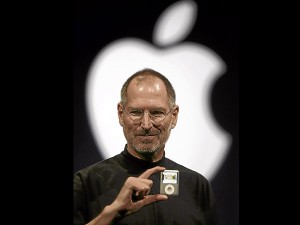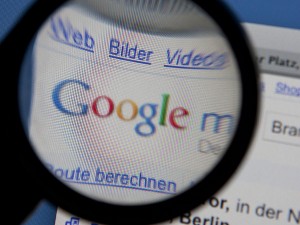Philippine Daily Inquirer
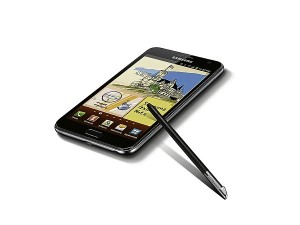 “Who wants a stylus?”
Steve Jobs asked an adoring throng in 2007 while unveiling the iPhone.
“You have to get them and put them away and you lose them— yuck! Nobody
wants a stylus.”
“Who wants a stylus?”
Steve Jobs asked an adoring throng in 2007 while unveiling the iPhone.
“You have to get them and put them away and you lose them— yuck! Nobody
wants a stylus.”And with that, the accessory that had defined a generation of early smartphones from Palms to Nokias and Motorolas withered away, a sudden clunky relic in the new age of breakthrough touchscreen phones.
But if the Korean electronics giant Samsung would have its way, the stylus wouldn’t go the way of dodos and dinosaurs just yet. Its latest “game-changing product,” as it calls it, is the Galaxy Note, whose most striking feature is a stylus, the S Pen, an “advanced pen-input technology” that’s worlds away from the simplistic point-and/or-scribble technology of the styluses of old.
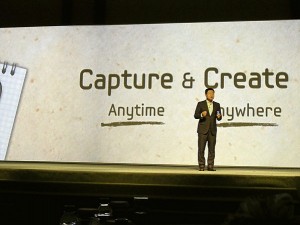 This one accessorizes a nifty gadget that’s a hybrid between a tablet
and a smartphone—“lightweight and easy to carry, but big enough to get
done what needs to be done while on the go,” said Gregory Lee, president
and CEO of Samsung Asia during the phone’s recent unveiling at the Ritz
Carlton Pacific Place in Jakarta, Indonesia.
This one accessorizes a nifty gadget that’s a hybrid between a tablet
and a smartphone—“lightweight and easy to carry, but big enough to get
done what needs to be done while on the go,” said Gregory Lee, president
and CEO of Samsung Asia during the phone’s recent unveiling at the Ritz
Carlton Pacific Place in Jakarta, Indonesia.Vital part
Galaxy Note remains a full-touchscreen phone, so why resurrect the stylus?
“Analog solutions like a pen still play a vital part in our lives,” said Lee. “The S Pen serves as a bridge between analog and hi-tech, with its precise, fast and rich input similar to an actual pen.”
More like a shape-shifting instrument, actually, from pen to paint brush (in a variety of styles from pointillist to wide strokes), as this enhanced stylus’ most immediate value is in the way it empowers artists and the creative-minded to transform their Galaxy Note into an instant sketch pad for highly accurate sketching and artwork.
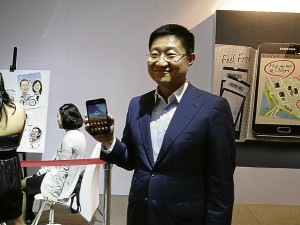 To
demonstrate this capability, Samsung brought in top Indonesian digital
graphic illustrator Teddy Soegiarto to doodle and sketch on the Galaxy
Note in real time during the launch. Soegiarto toggled among the phone’s
pen-responsive features, from the instant capture and annotation of
images to free-form scrap, which involved cutting out images in any form
desired to create new visual variations. In the anteroom leading to the
launch ballroom, several sketch artists and caricaturists were also
around, ready to do ersatz portraits of guests on their Galaxy Note.
To
demonstrate this capability, Samsung brought in top Indonesian digital
graphic illustrator Teddy Soegiarto to doodle and sketch on the Galaxy
Note in real time during the launch. Soegiarto toggled among the phone’s
pen-responsive features, from the instant capture and annotation of
images to free-form scrap, which involved cutting out images in any form
desired to create new visual variations. In the anteroom leading to the
launch ballroom, several sketch artists and caricaturists were also
around, ready to do ersatz portraits of guests on their Galaxy Note.“The artistically inclined will just love this phone,” said Lee.
Creative options
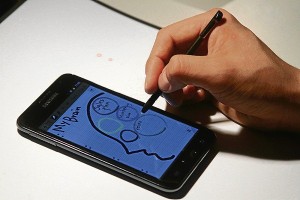 New applications were developed to provide users greater creative
options via the S Pen, among them OmniSketch and Zen Brush. The former
“enables users to sketch using the S Pen as a brush, while Zen Brush
provides oriental brush simulation.”
New applications were developed to provide users greater creative
options via the S Pen, among them OmniSketch and Zen Brush. The former
“enables users to sketch using the S Pen as a brush, while Zen Brush
provides oriental brush simulation.”Creating digital artwork, of course, becomes hugely more appealing on the Galaxy Note’s high-definition super AMOLED screen, with its trademark stunning crispness of detail and color, and its 5.3-inch display that’s “the largest ever included in a primary mobile device” (“gigantic—not only is it big, it’s also beautiful… making the Note a true video star,” says CNet UK in its online review).
Another notable app is the S Memo, which CNet enthusiastically describes as “one of the highlights, due to the way it sells itself on the Note. Basically it allows you to create memos using text (typed or handwritten), sketches, sound recordings, maps and pictures. These can then be shared in various ways, including on Twitter, Facebook, WhatsApp, Evernote, MMS or e-mail.”
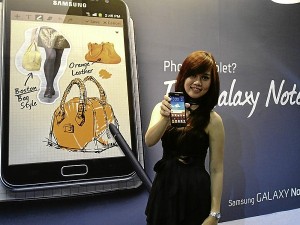 The
screen’s combination of bigness and brilliance, in effect, provides a
premium experience, on anything from watching videos to transcribing
notes to reading an e-book to surfing the Net to jazzing up a captured
image or photo (with handwritten emoticons, for instance, for e-mailing
to a loved one), a map (a scrawled “Find me here!” doesn’t get more
emphatic), or even a PDF file (for last-minute notes for that
early-morning business presentation). That expansive display also allows
for full-screen capacity (say, a newspaper’s online front page),
reducing the hassle of scrolling down or zooming in.
The
screen’s combination of bigness and brilliance, in effect, provides a
premium experience, on anything from watching videos to transcribing
notes to reading an e-book to surfing the Net to jazzing up a captured
image or photo (with handwritten emoticons, for instance, for e-mailing
to a loved one), a map (a scrawled “Find me here!” doesn’t get more
emphatic), or even a PDF file (for last-minute notes for that
early-morning business presentation). That expansive display also allows
for full-screen capacity (say, a newspaper’s online front page),
reducing the hassle of scrolling down or zooming in.The Galaxy Note’s Android 2.3 Gingerbread operating system runs on a 1.4GHZ dual-core processor, promising a device that’s “incredibly fast and delivers a smooth user interface for seamless usability.”
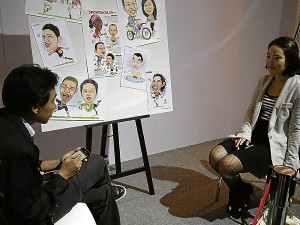 There’s also 16GB of built-in storage, plus an 8-megapixel camera
with autofocus and LED flash, and full HD (1080p) recording. All these
in a gadget that measures just 9.6mm thick, for easier portability
(though the mini-tablet size might admittedly still cramp some users’
pockets).
There’s also 16GB of built-in storage, plus an 8-megapixel camera
with autofocus and LED flash, and full HD (1080p) recording. All these
in a gadget that measures just 9.6mm thick, for easier portability
(though the mini-tablet size might admittedly still cramp some users’
pockets).Thumbs-up
Samsung chose to do its Asian launch of Galaxy Note in Indonesia in recognition of that country’s burgeoning affection for the brand. Long a Blackberry nation, the RIM gadget having made an early beachhead across Indonesia’s various social classes (“even househelp are equipped with Blackberry here,” a Jakarta-based friend told us), Indonesia is of late fast embracing the Korean electronics brand, which has seen its share of the domestic smartphone market rise to 22 percent as of May this year. In the rest of Asia, “with the introduction of the Galaxy Note, we are confident that Samsung will firmly maintain its number one position in the mobile category in Malaysia, Philippines, Singapore and Thailand,” said Lee in a statement.
The Galaxy Note, in white and dark blue variants, had its Philippine release two weeks ago, with a retail price of about P35,900. Pioneer tech blogger Abe Olandres of YugaTech.com has weighed in on the gadget, and it’s a thumbs-up: “The performance of the Galaxy Note trumps any other smartphone and tablet we’ve seen around… Definitely drool-worthy.”
Sorry, Steve, the stylus lives.
E-mail the author gcadiz@inquirer.com.ph, visit www.gibbscadiz.blogspot.com, follow on Twitter @gibbscadiz
http://bit.ly/tJr0TM
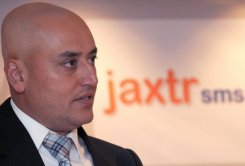
 WE
should all now be somewhere between “aware” and “immersed” in the
sharing and consumption of vast amounts of information about friends,
acquaintances or indeed complete strangers that is social media.
According to ComScore,
WE
should all now be somewhere between “aware” and “immersed” in the
sharing and consumption of vast amounts of information about friends,
acquaintances or indeed complete strangers that is social media.
According to ComScore,  IT
seems you can surf the Internet and check your e-mail from virtually
anywhere these days—in coffee shops, hotel lobbies, airport terminals
and airplane cabins.
IT
seems you can surf the Internet and check your e-mail from virtually
anywhere these days—in coffee shops, hotel lobbies, airport terminals
and airplane cabins. 

